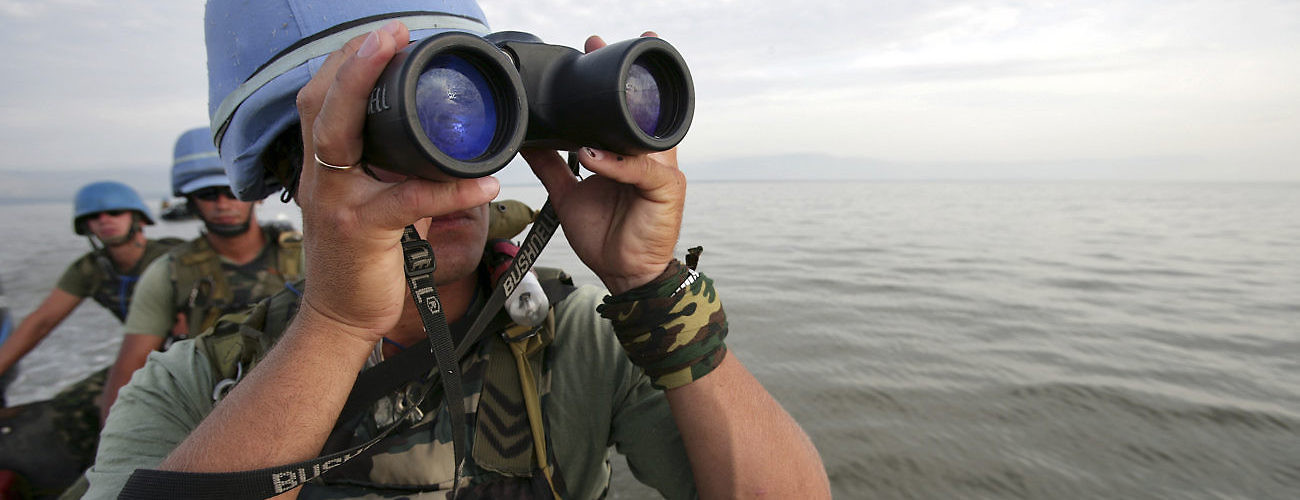Uruguayan peacekeepers in the Democratic Republic of the Congo on a patrolling mission on Lake Albert, October 8, 2005. (UN Photo/Martine Perret)
With UN peace operations involved in increasingly volatile and dangerous situations, there appears to be growing acceptance among member states that UN missions need greater capacity to generate intelligence, both to protect themselves and to fulfill their mandates more effectively.
This policy paper strives to unpack the concept of intelligence in UN peace operations by explaining its needs and requirements, existing structures, and limitations and to clearly define the concept of intelligence within the limits of the UN’s fundamental principles and its multilateral and transparent nature. It aims to clarify and demystify the debate on intelligence in UN peace operations and to propose a specific UN approach. In order to reform and strengthen its analytical capacities and capabilities in peace operations, this paper proposes that the UN:
- Develops a definition of intelligence different from the traditional military definition, which focuses on serving the national interest and operating against a clearly defined adversary—the primary aim of intelligence for a UN peace operation should be to contribute to a political solution in the long run;
- Implements an organizational framework that clearly defines the ethical and legal limitations of intelligence in UN peace operations—the UN cannot engage in covert or clandestine operations;
- Creates guidelines to frame a more structured process of information collection, analysis, and sharing, as well as effective and collective decision making;
- Establishes a comprehensive information-management system rather than new intelligence infrastructure, which most member states are likely to oppose for reasons of funding and politics;
- Applies a people-centered approach to intelligence by emphasizing human intelligence as a key capability that is at present underdeveloped;
- Creates a secure system for information sharing at all levels with clear and distinguishable levels of classification of different levels of access;
- Initiates and implements a culture of intelligence in the organization, to ensure that information and analysis is shared across silos with the objective of supporting decision makers; and
- Trains senior mission leadership on what intelligence assets are at its disposal and how to set intelligence priorities, request information, and provide feedback.








